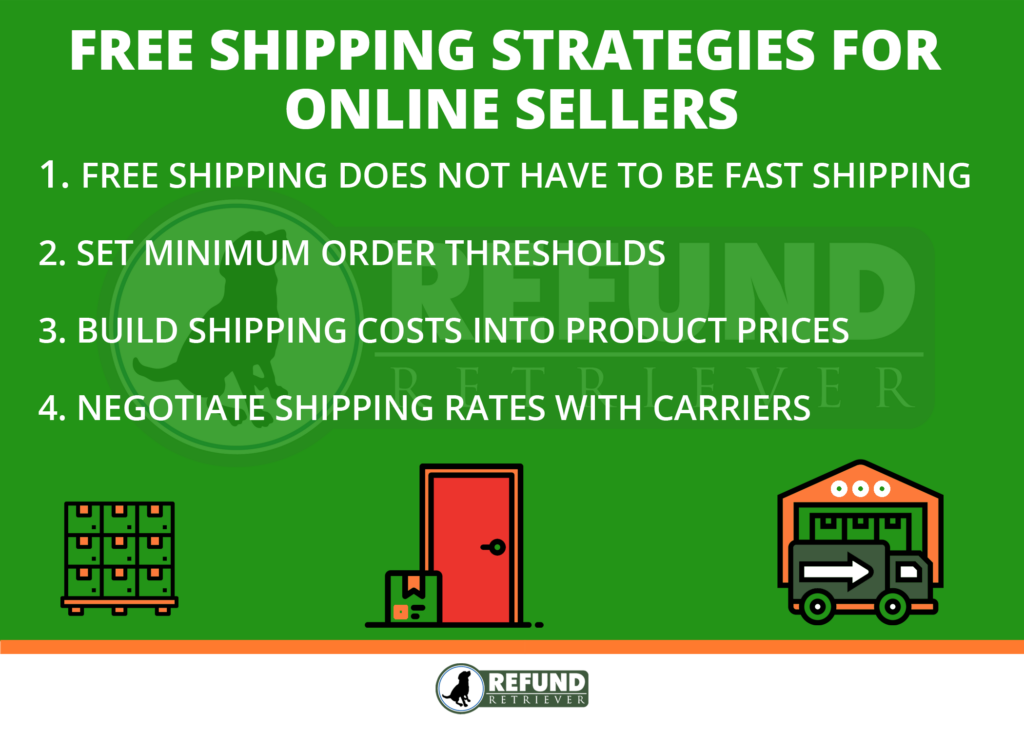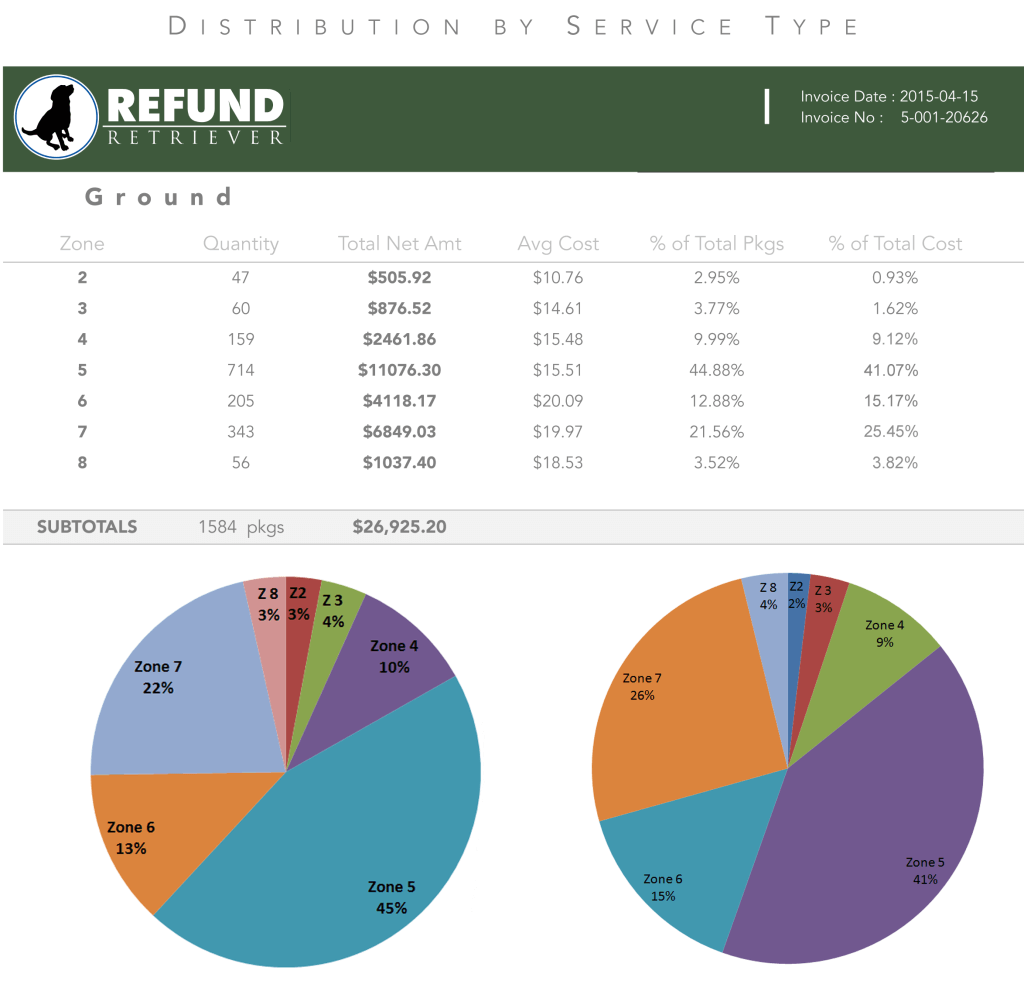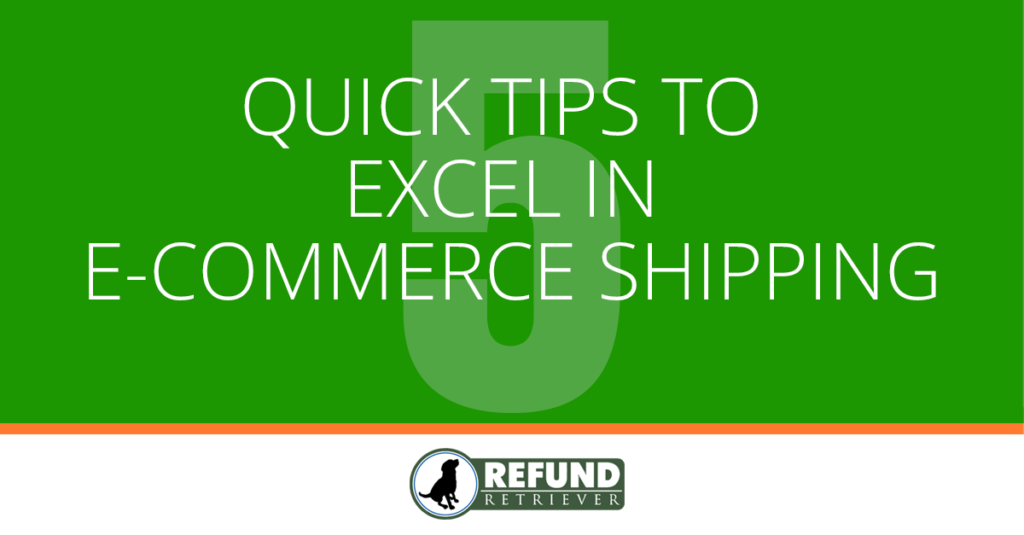A free shipping strategy is critical in today’s online marketplace. You have 100% confidence in your product. The price can’t be beaten. Customer service is off the charts. You receive a customer’s order and prepare products for shipping. And then it happens…the shipping process begins, and this is where your control ends. Or does it?
Estimated reading time: 6 minutes
Shipping can easily make or break a relationship with your customers, significantly affecting your bottom line. Shipping costs can turn your customers off entirely before they complete a transaction. What steps can you take to ensure your customer has a great product experience from beginning to end? What should you look for with a free shipping strategy?

Free Shipping: Do or Don’t
To begin with, as a shopper, free shipping is a significant factor in my online purchases. The first thing I do on Amazon is filter by Prime eligibility. Other sites will instantly lose my business if shipping costs are too high. Why? I know there is a great chance to find the same or similar product from a company that offers free or discounted shipping. A June 2014 study from UPS and comScore showed that 58% of shoppers would abandon their cart if shipping costs were too high.
1. Free shipping does not have to be FAST shipping
Keep in mind a free shipping strategy does not necessarily mean FAST shipping. I am willing to wait a little longer to receive an item if it keeps shipping costs to a minimum or if shipping is free. Most shoppers prefer free to fast shipping – favoring free shipping over 5-7 days rather than paying a shipping fee to receive items in just a few days. Moreover, many customers are willing to increase the number of items in their cart to qualify for free shipping.
Consider using UPS Surepost or FedEx Ground Economy service.
2. Set Minimum Order Thresholds
A free shipping strategy might not make sense if you offer free shipping on ALL your products. This would vary depending on what you’re selling. However, look at specific products where you might want to boost sales. Would it help to offer free shipping to start moving these products? Or offer discounted rates or free shipping on specific items only.
Implement a minimum order threshold that customers must meet to qualify for free shipping. For example, you could offer free shipping on orders above a certain dollar amount (e.g., orders over $50). This encourages customers to add more items to their cart to reach the minimum threshold, increasing the average order value.
3. Build Shipping Costs Into Product Prices
While you may not want to spread shipping costs equally over all products, it may behoove you to include shipping costs (or at least a portion) in some higher-end, higher-cost items. Keeping smaller items at a lower price allows you to be competitive, whereas shipping costs would be lower anyway. Passing on the shipping costs to consumers on the higher-end items might not sound ideal, but this is where the lure of “FREE SHIPPING” can come into play. Think about it: would you be more inclined to purchase something if the cost was slightly higher than other businesses, but the free shipping was free? Therefore, is this making the total purchase LESS than the lower-priced item plus shipping? I would.
4. Negotiate Shipping Rates with Carriers
Negotiate discounted shipping rates with shipping carriers or fulfillment partners. As your business grows, you may qualify for volume discounts or special rates based on your shipping volume. Lower shipping costs allow you to offer free or subsidized shipping to customers while still maintaining profitability.
Other Alternatives If Free Isn’t an Option
So, what if a free shipping strategy is impossible for your online business? This is often the case; margins might be too low, or the industry standard is abnormal. What else can a retailer do to make shipping a competitive advantage?
1. Real-time Shipping Quotes
It’s possible to set up real-time quotes in some shopping carts. While this may not be the cheapest option for consumers, it gives the customer a chance to see the actual cost. Knowing that they are paying only to cover the actual price instead of padding your wallet may be considered a ‘win’ for the customer. Plus, it helps take out the guesswork on your end.
2. Flat or Average Rate
Perhaps your products are similar in size and weight, and there is not much variety in the shipping costs. Charging customers an average amount of your shipping costs is easy to calculate. In other words, a flat rate. However, what if you have a large variety of inventory and your products vary significantly in size, shape, and weight? Maybe you want to look at your average cost per pound shipped and use this to determine what shipping rate you will charge.
3. Cost Per Pound Shipped

Regardless of what option you choose, the best thing for you to do to keep shipping costs at a minimum is to know your data. It’s hard to decide where to cut costs if you don’t know where you’re overspending. Likewise, are you getting the best rates? Could you save money by finding a better shipping method or carrier?
One option for a successful Free Shipping Strategy is to use the average cost per pound. This can determine how much to add to the sale price for each item. You know how much each item weighs and its dimensions. With Refund Retriever, you can see the cost per pound shipped for each UPS or FedEx service.
For example, say we are selling a 10-pound kettlebell with delivery to a house. The kettlebell costs us $5.25 wholesale. Based on our report above, Using FedEx Home Delivery will cost us about $11.26 on average. The cost to the customer’s door will be $16.51, so we can determine the sale price. While this might not work in every situation, it is a straightforward example or an easy way to start.
4. Zone Charts
Where are the majority of your packages going? In addition, what is the average cost for that zone?

If you know that 45% of your packages are shipped to Zone 5, and the average cost of your package to that zone is $15.51, you can use this to pad your sale price to cover most of your shipping costs across the board.
I know a few companies that use this rule, and all shipping costs are eventually covered. This is not the best, but a viable option if you do not have the proper shipping technology.
Free Shipping Strategy Conclusion
A successful free shipping strategy will strengthen your online business and reduce shopping cart abandonment. Go with whatever shipping option is best for your business model. What will the cost of shipping be versus the cost of losing a sale? In summary, the best solution is to stay informed. Refund Retriever provides our customers with comprehensive data to give them confidence in decision-making. That’s one option every customer deserves.

